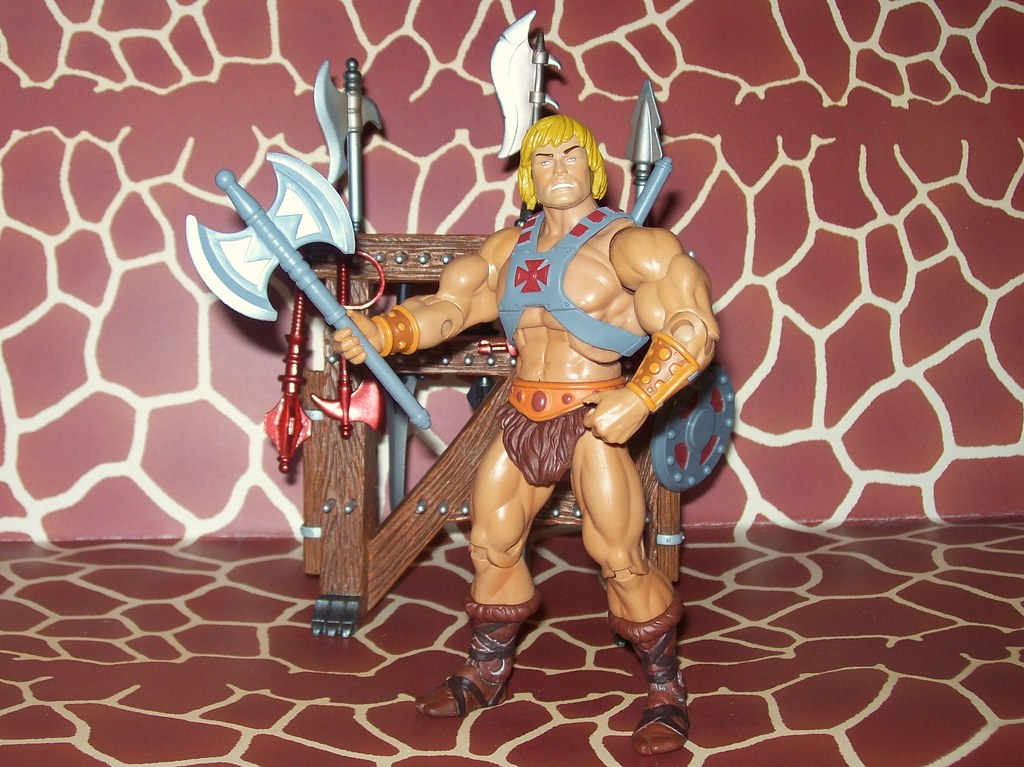Since the 1980s, the rate of computer ownership in the United States has only risen. From a meager 10% to about 80% in 2016, computers have become a household staple, no longer a commodity sought after by tech geeks or those with the money to burn.
While computers are well-integrated into our daily lives, the history of the personal computer stems all the way back to the 1970s. The first computer to be sold to the public market was the Kenbak-1 in 1971. Invented by John V. Blankenbaker, only 50 units were produced and each one was sold for $750 per piece. However, while Blankenbaker’s computer could be considered a personal computer, the exact term wasn’t coined until 1975 with the release of the Altar 8880 by Ed Roberts.
Though it seems like a distant era, it was only recently that computers were managed by only well-educated technicians; the idea of a computer being used as a tool for an individual user was a foreign concept as the majority of older computers had a team of specialists who filtered and fulfilled requests sent to it. In short, computers weren’t necessarily made to be used by an end-user and to fulfill individual requests on their own.
But as is the case with most types of technology, as the computer developed, so did its appeal and its usability for the public. The ’80s was the true renaissance period for personal computer development. Not all computers are made equal, and some computers introduced in the ’80s in particular had an important impact on the personal computing industry as well as the general public’s perception of computers.
In this article, we list out influential computers from the ’80s that changed the industry, their histories, and how the everyday person incorporated this new, advanced technology into their lifestyle.
Atari 8-Bit Family
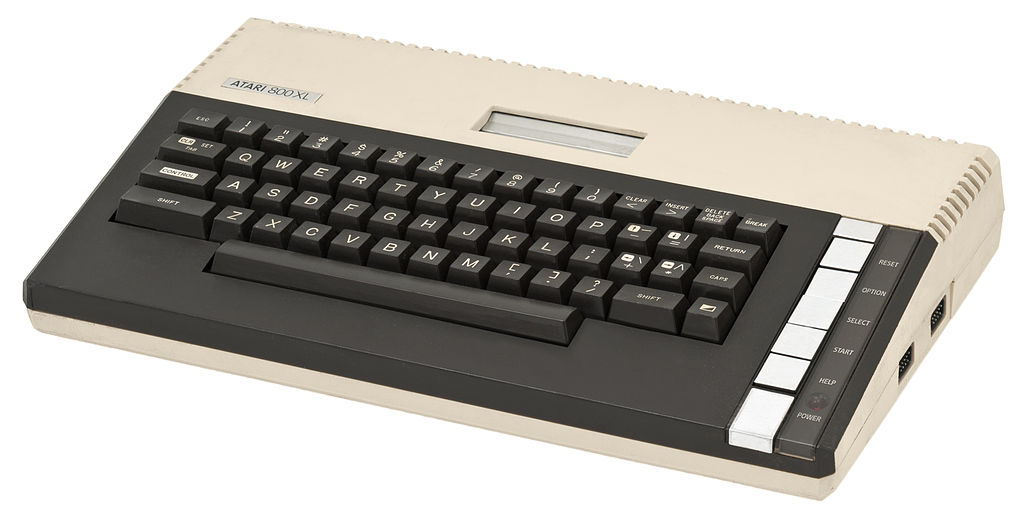
Most well-known for world-changing classics such as Pong, Atari is a household name among homebrew nerds and new-age geeks alike. While some individuals are unaware that the company is still alive today, despite filing for bankruptcy in 2014, more are unaware of the video game company’s foray into the realm of selling personal computers.
Though Atari’s attempt to secure footing in the personal computing industry fell short after the 1980s, Atari’s first personal computer release was commendable for its inclusion of the company’s gaming roots and its marketing strategies. Referred to as the Atari 8-bit family now, the first computers produced by Atari were simply the Atari 400 and Atari 800, respectively sold for $500 and $1000, and collectively known as the Atari 400/800 or the Atari home computers.
Compared to other personal computers released at the time, the Atari 400/800 had state-of-the-art graphics and sound systems. They were also the first computers to have their own distinctively designed coprocessor chips. Another appealing point for these computers was their gaming compatibility; Star Raiders was considered a killer app for the device and older as well as initiated tech nerds alike embraced the gaming features that the Atari 400/800 offered.
Selling about 2 million units from the late 1970s to the mid-1980s, the computers were available to the general public via dedicated computer retailers as well as department stores such as Sears. One marketing strategy which made them popular was the in-store display cases featuring the computers, allowing curious shoppers to try out the computers and play demos.
Though Atari would later forgo any further attempts to penetrate the market as its competitors were able to cut their prices, its first productions were monumental to the development and marketing of personal computers.
Apple’s Macintosh 128K
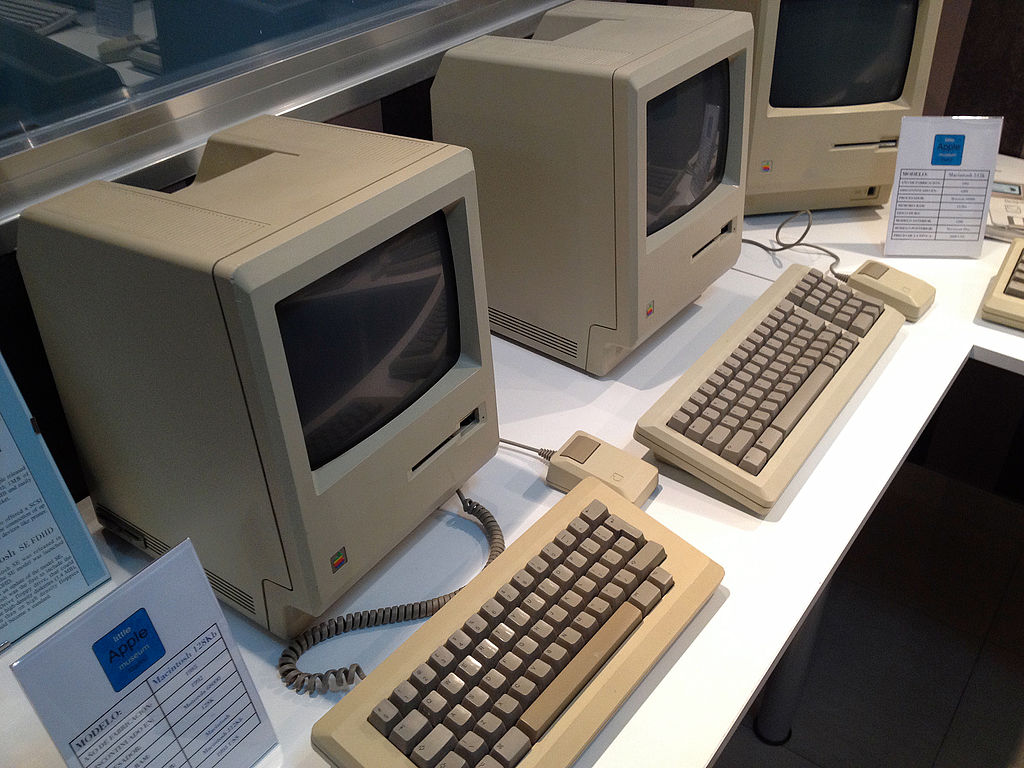
Though Apple is currently at the forefront of an ongoing feud between Windows users and Mac OS X users, no one can deny the revolutionary features of Apple’s Macintosh 128K model introduced in 1984. Selling at a steep price point of $2,495, the Macintosh 128K was best known for its emphasis on placing the user experience first as well as its famous commercial for the 18th Super Bowl directed by Ridley Scott and based off dystopian author George Orwell’s 1984.
At a moment of history where the still-growing technology industry was anticipating a personal computer war between IBM and Apple, Apple’s Macintosh 128K brought new ideas to the table which we take for granted now, such as a user interface based on graphics, and also included a mouse with its model. Before Apple’s Macintosh 128K, most computers operated with a command-line interface. Rather than clicking an icon that corresponded to specific software, the command line interface was more text-based and required the user to input a command before the computer could take action.
While the Macintosh 128K featured two types of software, a word processing system and a primitive version of Paint, unfortunately upon its initial release it didn’t have as much new software to bank on. Nonetheless, the Macintosh 128K still did well at its launch with over 70,000 units sold, and its focus on providing a pleasant graphics-based experience for experienced and newer users alike was refreshing and novel.
Commodore Vic-20
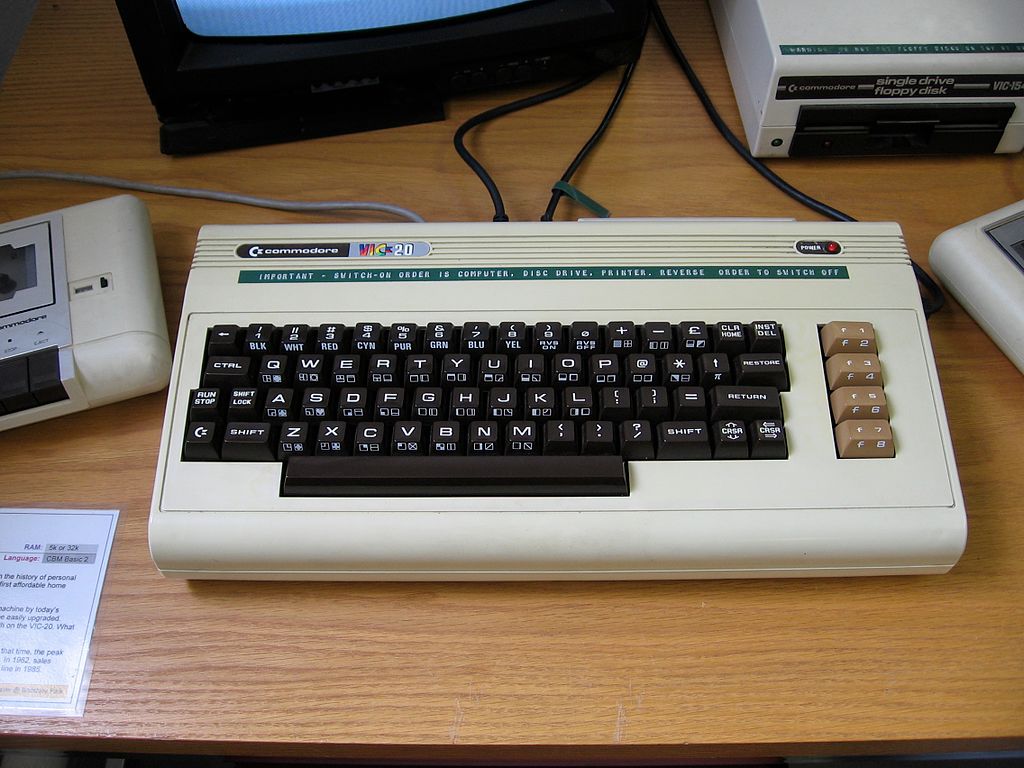
While the Commodore Vic-20 was more of a tentative step into the personal computer market for Commodore, and definitely didn’t have the popularity of the Commodore 64 released in 1982, the computer was important for one thing: opening up the demographic for the personal computer market.
The early ’80s were a strange flux for the personal computer market; not only was it still developing itself technological-wise, but its main selling demographic also varied on how companies marketed their personal computer units. For the Commodore Vic-20, it sought to reach a wider demographic and did so with success.
Priced at only $200, the Commodore Vic-20 managed to sell itself as a middle-class indulgence. With its low price point and clean design, it appealed itself as a computer for the everyday person—not just for those with interest in technology, coding, or computers. By giving an image that computers were no longer expensive investments requiring a good deal of prior information for their usage, the Commodore Vic-20 helped in gaining trust from the general public when it came to purchasing personal computers.
However, alongside the Commodore Vic-20’s contribution to the marketing of personal computers, its technical specs weren’t something to scoff at. With eight-color graphics and three-voice sound, the Commodore Vic-20 featured something which was rare in the early 1980s: a sturdy, high-quality keyboard.
Commodore 64
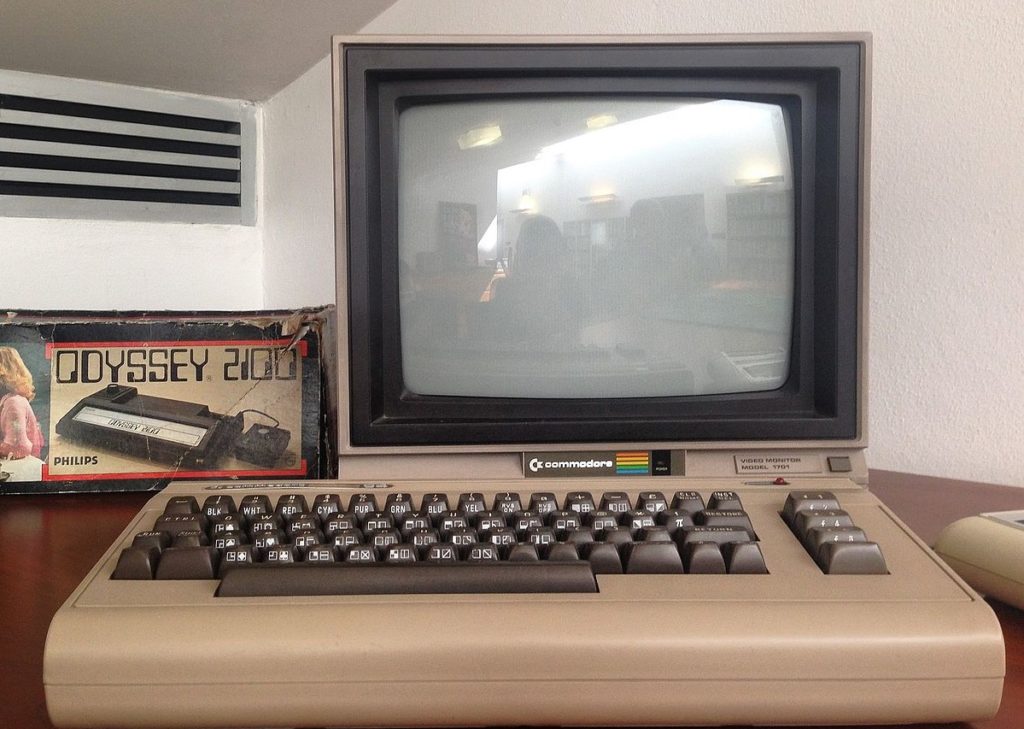
Released in 1982, succeeding the Commodore Vic-20, and while unfortunately no longer a household name, the Commodore 64 held a massive influence. Selling around 10 to 17 million units, the Commodore 64 holds the current Guinness World Record for the most highly sold personal computer unit. With over 10,000 software titles produced for this computer and its ease of use for even those who had little to no experience with computers, the Commodore 64’s popularity continues today among computer-geek and tech nerd circles alike. However, what led to this computer’s rise specifically?
One appeal point of the Commodore 64 was its accessibility. The Commodore 64 didn’t require a specific monitor for use, so even a television set was sufficient enough for the personal computer. There was also an ample amount of software available for Commodore 64 users, including work office applications, games, and development tools. In addition to its accessibility hardware and software-wise, the Commodore 64 was sold at a jaw-dropping cheap price at the time—$500. Compared to other personal computer competitors such as the Atari 400/800 and the Apple II, the Commodore 64 was well-known for being superbly cheap, and at one point even caused a price war with Texas Instruments, ousting the company out from the personal computer market. Furthermore, Commodore was flexible when it came to deciding who could sell their new model—from your traditional computer retailer to department stores to even college co-ops, the Commodore 64 was available everywhere, covering multiple demographics.
Considering the time period and the novelty of the personal computer, how was it possible for the Commodore 64 to remain at a cheap price point? By manufacturing its parts in-house, the Commodore 64 was able to lower costs, and eventually, the price for this particular personal computer dropped to $200. One former employee of the company once mentioned that for several years “400,000 units” were created every month to accommodate growing public demand.
Commodore Amiga
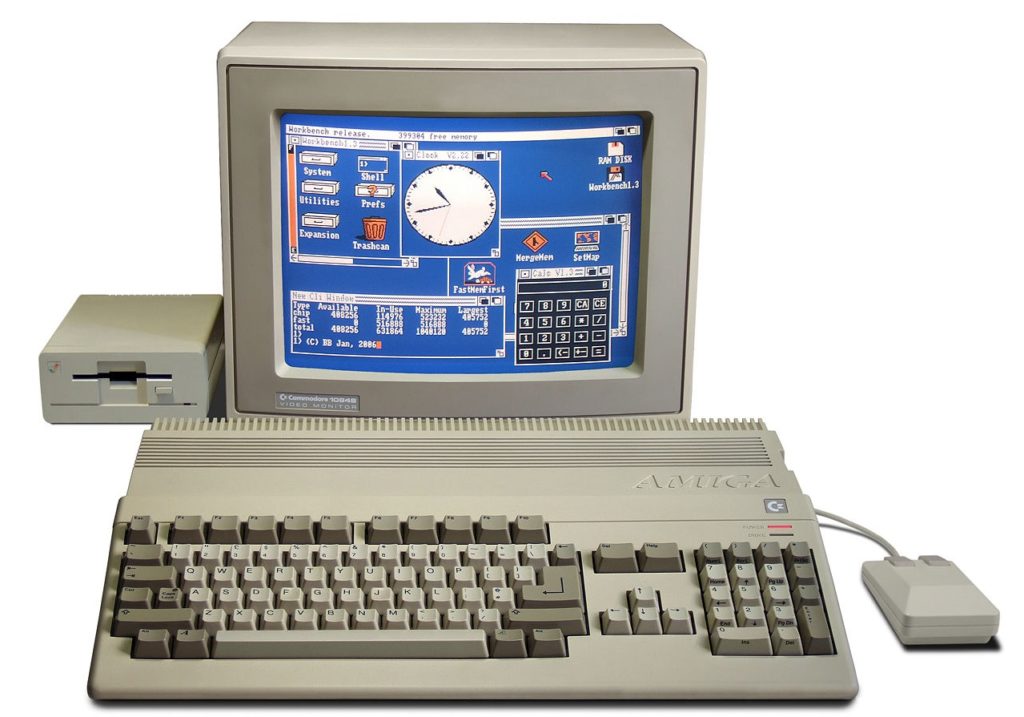
The last line of personal computers released by Commodore, the Commodore Amiga was a hardware powerhouse. With 256KB of RAM, a 256-color display, and the ability to process 3D-rendering packages, the Commodore Amiga’s technical specs were a massive upgrade compared to its counterparts in the personal computer market. Furthermore, the Commodore Amiga’s operating system was well-known for being especially efficient with an extremely quick boot-up time. Another feature that was a testament to the Commodore Amiga’s advanced hardware was its ability to smoothly multitask even if there was a crashing piece of software; many personal computers, such as those belonging to Apple, would freeze entirely in a similar situation.
However, those with a background in technology or with a deep interest in computers weren’t just attracted to the Commodore Amiga line due to its high specs—the Commodore Amiga was also open to customization, and for some, the appeal of this particular personal computer was optimizing it to its possible maximum potential.
Unfortunately, despite the Commodore Amiga’s great hardware and software, and the fact that one of its models, the Commodore Amiga 500, would end up selling four to eight million units, it would end up becoming the final set of computers released by former personal computer giant Commodore. Years of infighting among company executives, a constant stream of firing experienced engineers, and replacing them with new teams from IBM unsure of what they were working towards to, and overall weak marketing of the Commodore Amiga’s capabilities would lead to the company’s downfall.
Though Commodore itself is no longer in business, its computers from the Vic-20 to the Commodore 64 to the final Commodore Amiga line would go on to live in history and in the hearts of collectors, computer geeks, and tech die-hard alike.
Conclusion
While today you don’t necessarily need a computer to access the Internet and its conveniences, the computer nevertheless played an essential role in shaping the modern world. As technology evolves, develops, and becomes more accessible to the public, so do the ways we communicate, engage, and understand our environment changes as well.







